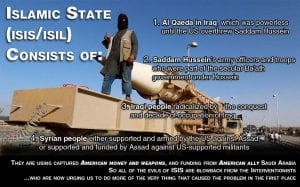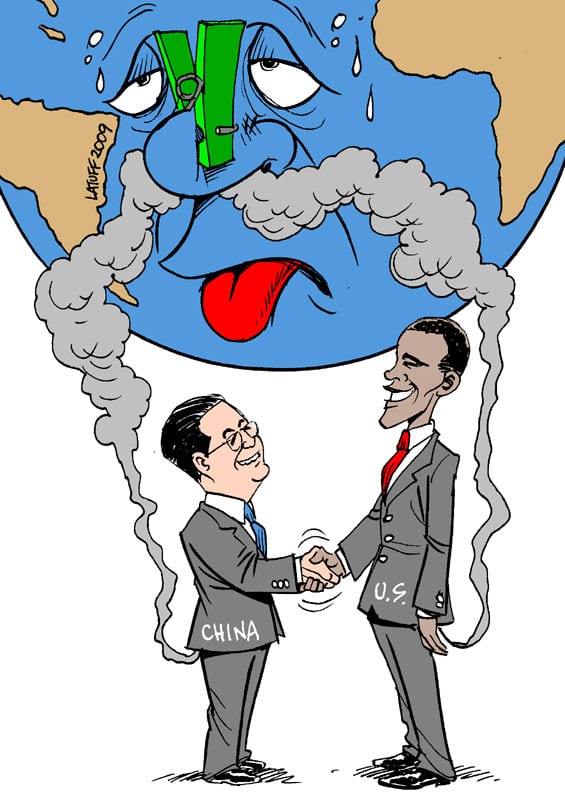Most Violent Countries: USA Top of the Food Chain
Updated June 2023
Introduction:
Over the past half-century, America has led in causing more wars and conflicts than any other nation. It has extended its support to governments that brutally oppressed and tortured their citizens. Rather than evolving into a shining beacon of hope after inheriting the mantle from Britain, it has embarked on an even darker and more tumultuous path.
This post offers a concise overview of this unsettling trajectory, shedding light on how the U.S. seemingly champions democracy and peace while paradoxically contributing to tyranny and chaos. It delves into the intricate complexities that have placed the United States at the forefront of the ‘Most Violent Countries” list, a sobering reality that warrants close examination.
A Dominant Force Among the World’s Most Violent Countries
The sheer scale of American military power also cements its position at the top. With over 800 bases stationed around the globe and a defence budget more prominent than the following ten countries combined, the U.S. maintains an unparalleled ability to project force anywhere in the world. This allows it to intervene militarily in countries like Iraq, Afghanistan, Libya and Syria under the guise of counterterrorism while often exacerbating instability, fueling new insurgencies, and costing hundreds of thousands of civilian lives.
America’s geopolitical dominance is also maintained through weapons exports and security partnerships that arm authoritarian regimes like Saudi Arabia and Israel, using those arms to wage devastating wars in Yemen and Palestine. The U.S. also turns a blind eye to human rights abuses by allied nations if they purchase billions in American weapons and follow Washington’s strategic objectives. This combination of direct military force and enabling violence by proxies cements America’s role as not just the most violent nation but also the single most significant dominant force perpetuating global conflict and instability.
America’s Military-Industrial Complex
The influence of the military-industrial complex extends far beyond budget numbers. Weapons manufacturers effectively act as lobbying powerhouses that help drive the United States into ever more military spending and overseas intervention. For example, arms companies have spent over $100 million annually on lobbying efforts, ensuring that Congress funds expensive jet, ship, and missile procurement programs regardless of changing national security needs.
This marriage of corporate and political interests perpetuates a state of permanent war. Even when direct conflicts end, the military-industrial base demands new enemies to justify its continued expansion. From Al-Qaeda and ISIS to the rise of China, new threats are constantly hyped in the media to feed the bottomless demands of arms companies for profit growth. The cycle of violence is hard to break when billions in corporate revenues and millions of manufacturing jobs have come to depend on it.
Ultimately, the military-industrial complex distorts American foreign policy priorities and fuels unnecessary wars to enrich private interests. As long as weapons makers hold such powerful sway over politicians, the U.S. will continue prioritizing military force and global dominance over diplomacy, ensuring its top position among the world’s most violent nations remains unchallenged.
The Human Cost of America’s Wars
The human costs of America’s post-9/11 wars extend far beyond body counts. The psychological toll has been immeasurable for millions of civilians living in war zones. Children growing up amid constant violence suffer high rates of PTSD, anxiety, and lost educational and economic opportunities. Entire generations in Iraq and Afghanistan have known nothing but war.
Veterans also face trauma upon returning home. In addition to over 7,000 lives lost, nearly 40,000 have been wounded in action. The VA system has struggled to meet the massive demand for mental healthcare, with suicide rates among recent veterans far exceeding non-veterans. Substance abuse, homelessness and incarceration are other societal impacts often borne from post-traumatic stress.
While national security threats require a response, many analysts argue the United States exaggerated WMD claims to invade Iraq and underestimated stabilizing occupations. Drone strikes and kill lists also set dangerous precedents for extrajudicial killing. Until addressing the roots of violence abroad and supporting veterans at home, the U.S. will continue justifying its position as one of the world’s leading purveyors of human suffering and trauma through armed conflict.
America’s Culture of Guns
The gun lobby further exacerbates America’s violence issues through its stranglehold on politicians. The NRA has spent over $200 million on campaign contributions and lobbying since 1998, working tirelessly to block even modest reforms like universal background checks. This has allowed gun manufacturers like Smith & Wesson to irresponsibly market ever more lethal assault weapons without safety restrictions.
Some argue the Second Amendment enshrines an individual right to bear any firearm. However, when it was written in 1791, citizens owned muskets that fired one round per several minutes—not semi-automatic weapons capable of mowing down dozens in seconds. Other nations like Australia have proven that commonsense regulations on military-style firearms can curb mass shootings while respecting gun ownership traditions.
Until reducing the gun lobby’s power and enacting laws addressing the core drivers of America’s gun violence crisis, like mental healthcare, easy access to assault weapons will continue to guarantee a constant stream of needless deaths. As long as this remains the status quo, the United States will stand alone in the developed world for its uniquely deadly culture of firearms.
America’s Violent Domestic Landscape
Income inequality and lack of social mobility are significant drivers of violence in the United States. Areas with greater poverty and wealth gaps tend to experience higher crime rates, as those without economic opportunities sometimes resort to illegal means to get ahead. This is compounded by racial inequities, as gun deaths disproportionately impact communities of colour in urban centres.
Mental healthcare access is also woefully inadequate, especially after the 2008 recession. Economic strain is known to exacerbate conditions like depression, bipolar disorder and schizophrenia—yet millions lack insurance or live in areas with shortages of psychiatrists and psychologists. This issue is linked to both mass shootings and higher suicide rates.
Over-incarceration has destroyed the social fabric of many minority neighbourhoods through decades of harsh drug sentencing. Even after their release, former prisoners face severe legal discrimination in housing, jobs and voting rights—barriers that increase recidivism. The U.S. prioritizes punishment over rehabilitation at its people’s expense.
Addressing the deep-rooted social maladies underlying America’s violence will require sustained reforms to build greater equity, support systems and opportunity into the fabric of society.
America’s Violent Foreign Policy
The human costs of U.S. interventions have extended well beyond initial military campaigns. Covert actions to depose leaders in Iran, Guatemala, Chile and elsewhere often installed brutal right-wing dictatorships responsible for mass killings, torture and disappearances. Even after Saddam Hussein’s fall, American occupation policies fueled a bloody civil war in Iraq that cost over 200,000 civilian lives.
In Afghanistan, a relentless bombing campaign has radicalized new generations against the West while Taliban forces regain control. Drone strikes targeting alleged terrorists have killed thousands of Pakistani and Yemeni civilians over the past two decades, serving as an effective recruitment tool for jihadist groups. The human rights impacts of the war on terror will continue shaping geopolitics for decades to come.
While national security threats require firm responses, the United States too often employs military force as a first resort rather than the last option. Regime change actions rarely follow coherent stabilization plans, leaving power vacuums that fuel further conflict. Until curbing unilateralism and improving post-war reconstruction efforts, America will struggle to reduce its reputation as one of the world’s primary drivers of instability and violence across the globe.
The United States: Among the Most Violent Countries in Firearms and Violence
Indeed, the United States holds the top position regarding violence and its preparations. According to a 2013 Stockholm International Peace Research Institute report, the U.S. government accounted for 37% of global military expenditures, placing it far ahead of all other nations. (The two closest competitors, China and Russia, accounted for only 11 per cent and 5 per cent, respectively.) From 2004 to 2013, the United States also claimed the world’s leading weapons exporter title. Furthermore, given the U.S. government’s nearly uninterrupted series of wars and military interventions since 1941, it appears poised to maintain its dominance in international violence.
This extensive record of violence is mirrored on the domestic front, where the United States leads in the number of firearms and gun-related deaths among all countries. A study released in late 2013 revealed that the United States possessed 88 guns for every 100 people, along with 40 gun-related deaths for every 400,000 people – figures surpassing those of any of the 27 economically developed countries included in the study. By contrast, in Britain, there were merely 6 guns per 100 people and just 1 gun-related death for every 400,000 people.
Concluding thoughts on the Most Violent Countries
“While denial and defensiveness remain popular responses, truly addressing America’s violence will require facing complex realities, including the fact that it occupies the top spot on the ‘Most Violent Countries’ list.”
The costs of militarism, easy access to firearms, and deep social inequities have grown too large to ignore. Reform will involve tackling entrenched political obstacles like the gun lobby and military-industrial complex that profit from the status quo.
Positive change is possible if citizens demand it. Recent mass shooting survivors have helped propel the issue of assault weapons back into the national conversation. Police reform movements also show that public pressure can impact systemic racism, sustaining over-incarceration. International cooperation on arms trade regulations and nonproliferation treatments demonstrates a multilateral willingness to curb the global violence enabled by unrestricted weapons flows.
Most importantly, overcoming decades of denial necessitates acknowledging uncomfortable truths—that no other developed nation comes close to matching America’s position as both the wealthiest and one of the most violent societies on earth. However, with political will and sustained grassroots efforts, communities and policymakers can work to redefine national priorities, shifting the focus from military dominance to fostering human well-being. This transition could help the United States address its challenges and reduce violence worldwide, gradually removing it from the “Most Violent Countries” list.
Other Articles of Interest
EU stands to benefit by Granting China free market status
China cuts rates to boost green energy demand

China showcases its culture to the World
Remaking Moscow lures more Chinese investment
Chinese firms extend Moscow’s rail networks
Russians show patriotism on nuclear bunker tours
Moscow hi-tech parks seek lower production costs
Despite challenges & sanctions: Russian oil & gas remain profitable
Downed Su-24 shows U.S treachery
Global Warming Is Fake: Let’s See If This is True

Chinese flocking to U.S. Real Estate and German Migrant crisis

U.S. backed Coup in Ukraine, China wins, Russia resists

Fake ISIS Beheadings?



